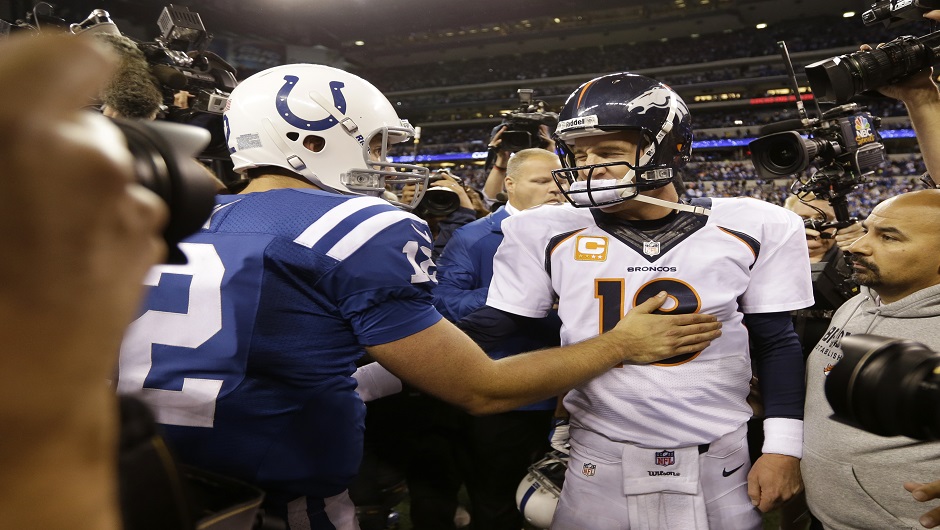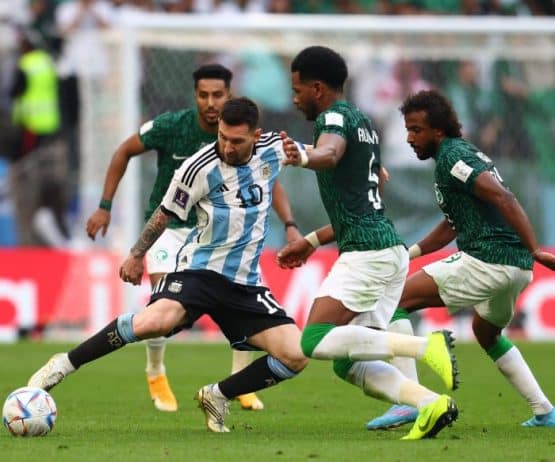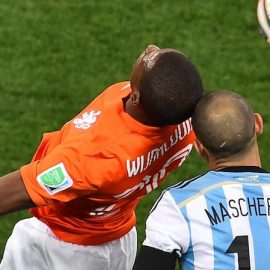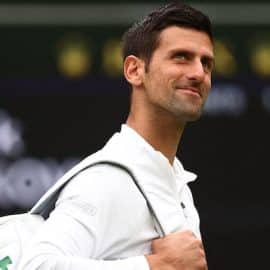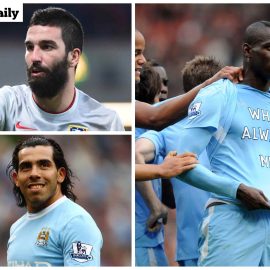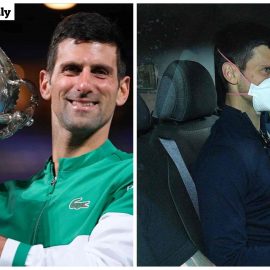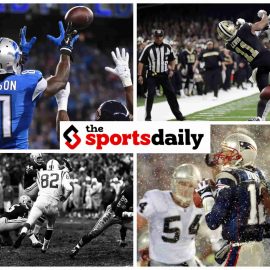Andrew Luck will spend the rest of his career being compared to Peyton Manning.
It comes with the territory.
Colts owner Jim Irsay released one of the greatest players in NFL history in order to smooth the road for the arrival of Luck, forever inviting endless comparison between the quarterback who built football in Indianapolis and the one who inherited his mantle.
In many ways, Luck’s arrival in Indy has been a smashing success. Since installing him as quarterback, the Colts have gone 20-10 and already clinched their second-consecutive playoff berth. The Luck era has been a thrill-a-minute with seven fourth-quarter comebacks and 10 total game-winning drives in the final frame or overtime.
The most conventional way of comparing Luck and Manning is simply to line up their stats from their first two seasons side by side. The result warms the hearts of Colts fans who envision another decade-long run of success behind an All-Pro quarterback.
| Through 30 career games | Att | Comp | Comp% | Yards | YPA | TD | INT | Sack | Sack % | Rating | Record |
| Manning |
1036 |
612 |
59.1% |
7435 |
7.2 |
52 |
43 |
36 |
3.4% |
80.7 |
15-15 |
| Luck |
1123 |
630 |
56.1% |
7673 |
6.8 |
44 |
27 |
71 |
5.9% |
80.3 |
20-10 |
Luck compares favorably to Manning using this method. He has thrown for more yards and fewer picks. His passer rating is nearly equal, and the team has won more games.
Of course, this doesn’t even include Luck’s rushing numbers. Toss in 620 rushing yards and nine more rushing touchdowns. Manning only had 118 rushing yards and two scores through 30 games.
So it’s a slam dunk for Luck, obviously. There’s absolutely no question that through their first two seasons, the Stanford grad is a better NFL quarterback than his legendary predecessor.
There’s just one problem.
Many quarterbacks appear better than Peyton Manning after 30 games.
You know who else has great “first two years” stats compared with Manning? Josh Freeman. Granted, he didn’t pass as often as Manning, but if you want an even better comp, try Andy Dalton. He threw almost as many touchdowns, far fewer interceptions, had a better record and a higher passer rating.
The fact is that having better stats than Peyton Manning through two combined seasons is a neat trick, but it’s not as uncommon as you would guess. The real accomplishment is having a better second season in the NFL than Manning.
While we don’t know the rest of Luck’s story, we do know what happened to Manning. After a brutal rookie season in which he set a record for interceptions, he became an elite player in just his second year. Four seasons after that he won the first of his record four MVP awards.
Matching Manning’s second year is nowhere near as easy as matching his first two combined. Comparing just their sophomore campaigns, much of Luck’s luster fades.
| Att | Comp | % | Yards | YPA | TD | INT | Sack | Sack % | Rating | Record | DVOA | |
| Manning |
461 |
286 |
62.0% |
3696 |
8.0 |
26 |
15 |
14 |
3.0% |
92.4 |
12-2 |
34.0%* |
| Luck |
496 |
291 |
58.7% |
3299 |
6.7 |
21 |
9 |
30 |
5.7% |
80.3 |
9-5 |
1.3% |
*Manning’s DVOA is for the entire 1999 season. All other stats are through 14 games.
Luck isn’t even in Manning’s stratosphere. Most every significant rate stat is lower for Luck as are most of the volume totals. Take special note of the DVOA category. Using the Football Outsiders advanced metrics helps to illustrate the in-game efficiency of the two men. Manning finished the year the second-ranked quarterback in the league (behind MVP Kurt Warner). Luck grades out right at league average. Take note that Manning had a much higher completion percentage while also throwing for a vastly superior yards per attempt.
Manning’s sophomore campaign was legendary. Luck’s has been solid, but nowhere near as spectacular. He’s not as accurate nor does he stretch the field as well as Manning did. He still scrambles better, but takes far more sacks. Manning was the second-best quarterback in the game. Luck is closer to the tenth.
The gap between the two is wide, but not all numbers reflect just the player under center. The deterioration of Luck’s offensive cast has dampened his effectiveness. He has already lost his two starting running backs, his starting tight end and Reggie Wayne to injuries this season. The loss of his primary target has been devastating. Losing Wayne has caused Luck’s season numbers to level off after a hot start.
| Att | Comp | % | Yards | YPA | TD | INT | Rating | |
| With Wayne |
224 |
136 |
60.7 |
1574 |
7.0 |
10 |
3 |
91.3 |
| Without Wayne |
272 |
155 |
57.0 |
1725 |
6.3 |
11 |
6 |
80.3 |
Before the injury to Wayne, Luck’s numbers were at least in 1999 Manning’s ballpark. He was not nearly as efficient as Manning, but was in the middle of having a fine season. And ex-Colt Jeff Saturday agrees, in commenting on Wayne’s comparison of Luck to Manning:
Quarterback play is about elevating teammates more than it is about stockpiling weapons, however. It’s true that Luck doesn’t have a young Marvin Harrison and Edgerrin James on his side, but people often forget just how thin the 1999 Colts were on talent beyond the famous triplets. Terrence Wilkins and E.G. Green were Manning’s second and third receivers and combined for just 852 yards receiving on the season.
As a passer, Luck simply isn’t as refined as Manning was at his age. One area Luck can still improve is his mechanics. He has a strong arm and can make all the throws, but there are still times where his form breaks down and the ball sails on him. This showed up recently against the Saint Louis Rams. Luck missed several open receivers, consistently delivering the ball high of the mark. The trouble will often show up in streaks where for a half or a game, he loses precision on his throws.
Of special concern for Luck is his sack rate and the number of hits he takes. His overall sack rate is reasonable for a second-year starter, but compared with Manning, he is wanting. He doesn’t have the quick read and release skills that his predecessor possessed. His sack rate is slightly better than average for a second-year starting quarterback. It’s not bad, but it isn’t elite either.
Luck has already taken double the number of sacks that Manning did through his first two seasons. It’s true Indianapolis has a poor offensive line, but what people forget is that Manning’s offensive line wasn’t appreciably better back in 1999. It featured two second-year undrafted free agents, and not a single player with more than three years experience in the NFL. Even with that limited crew, Manning was already adept at avoiding pressure, a trademark skill throughout his career.
Contrary to popular belief, sack rate is primarily a function of quarterback play, not his offensive line or supporting cast. In Luck’s case, however, it is possible that he is holding the ball too long in an effort to make plays downfield. His version of the Colts have few strengths that he himself doesn’t generate. In other words, if Luck doesn’t make a play, no one else will. Sack rate is typically a stable stat, so it will be a challenge for Luck to alter his mindset to avoid negative plays in the backfield.
The good news for Luck fans is that he’s managed to stay positive during a difficult stretch for his team. The Colts still have yet to lose consecutive games with Luck under center, and his play has improved as he begins to adjust to Wayne’s absence. He’s thrown six touchdowns and only one interception to go with a single sack over the past two games. In the long run, this stretch of improvisational offense may prove a valuable lesson.
Ultimately, the comparison between Luck and Manning won’t come down to arm strength, mobility or even the ability to dissect a defense. Manning worked harder and more fanatically than any player in the game during his years in Indianapolis. Young Manning had plenty of flaws in his game, but over time grew in arm strength, the ability to move outside the pocket and in his knowledge of defenses. He developed a legendary rapport with his wideouts built on the foundation of countless off-season hours spent working.
No matter what happens in the future, comparisons will always be drawn between the two players. And the Broncos vs Colts matchup highlights illustrate why.
For Luck, the next phase of his development will be as he transitions from humble rookie to confident pro to unquestioned leader. That element of his game will depend on his own level of desire. Like Manning, he inherited NFL genes. Like Manning, he’ll have to find the internal drive to work on his game harder than anyone else works on theirs.
Luck is still growing as a player and by any measure his first two seasons have been a smashing success. The Colts will host a playoff game in just his second season and appear poised to be a force in the conference for years to come. There is plenty to be bullish about in Indy. With improved receivers, better pocket awareness and continued vigilance over his throwing motion, Luck will soon find himself among the top five quarterbacks in the game. If he works hard enough, he may even become the best.
Ultimately, the only standard by which it’s fair to call Luck’s second season a disappointment is the impossibly high standard set by the man who came before him. Luck is a good young quarterback. Manning was a great one. And whether they like it or not, the two will be forever linked.
Add The Sports Daily to your Google News Feed!
